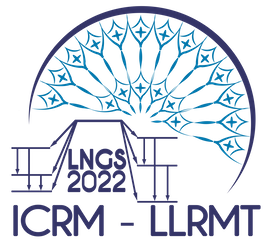Speaker
Description
A comprehensive radiological characterisation of groundwaters intended for human consumption was addressed between 2017 and 2021 in Castilla y León (Spain) according to the current Spanish regulation (RD 314/2016), transposition of the Council Directive 2013/1/EURATOM. Within this framework, more than three hundred samples were analysed to determine 238,235,234U, 228,226,224Ra, 210Pb, and 210Po using both low-level γ−ray and α−particle spectrometry techniques. Their activity concentrations were in the range of 0.231(52)-1349(25), 0.042(14)-68.4(31), 0.40(14)-1865(52), 0.108(72)-76.1(21), 0.24(14)-1162(27), 0.44(28)-268.6(71), 0.88(56)-799(16) and 0.108(20)-55.3(18) mBq·l-1, respectively. Gross alpha and beta activities were also determined with the purpose to study their predictive capability in groundwaters with a natural radioactivity content. This is relevant because gross alpha and beta activities are used to control variations in the natural radioactivity of the groundwater bodies once radiologically characterized and it is widely known that traditional methods do not reproduce alpha and beta activities in this instance. Consequently, the methods applied were improved for low-level proportional counting and liquid scintillation techniques. Regarding proportional counting, sources were prepared from variable aliquot volumes to obtain a constant dry mass residue in the planchet reducing the self-absorption alpha particle and direct efficiencies were assessed for each sample using a natural uranium standard solution. Source preparation for liquid scintillation counting (LSC) was according to the ISO 11704:2018 using for alpha and beta efficiencies also the same natural uranium standard solution as for proportional counting. The results obtained using both techniques did not differ statistically and, overall, they were correlated with the sum of the activities corresponding to the natural radionuclides present in the samples. This means that gross activities as determined with the improved procedures can provide us insight into the radionuclide content of the groundwaters. To test it, low-level LSC was also used for the rapid determination of 238,235,234U activity concentrations. Samples were selected according to certain hydrogeochemical conditions that promote the preferential mobilisation of uranium isotopes from bedrock minerals to groundwater, ensuring the presence of other alpha natural emitters (mainly 226,224Ra and 210Po) kept very low and/or below the technique detection limit. The total procedure times were less than 24 hours because source preparation did not require laborious radiochemical procedures and an ultra-low background LSC detector was used for the measurements. The results obtained were compared to the α spectrometric ones and, therefore, 234U enrichments as measured by the liquid scintillation method proposed were assessed. In this work, LSC for uranium determination constitutes a rapid alternative which together with the high predictive capability improve methods are a clear guideline for laboratories responsible for the environmental radioactivity from given the extensive applicability of the regulatory framework.

